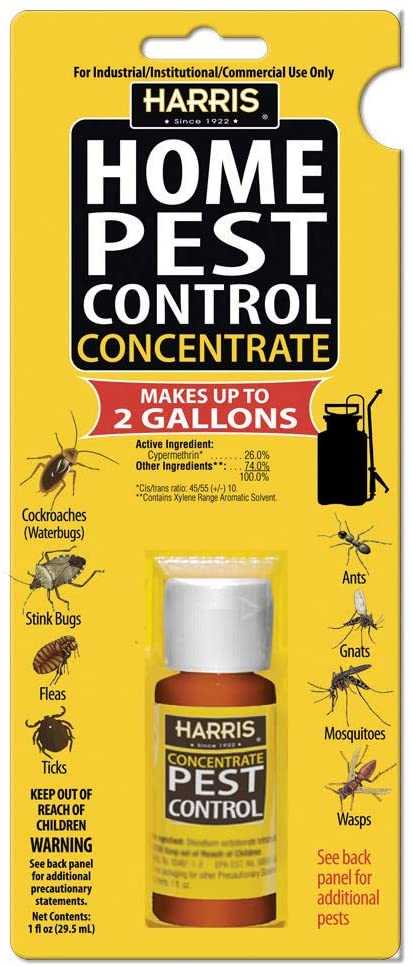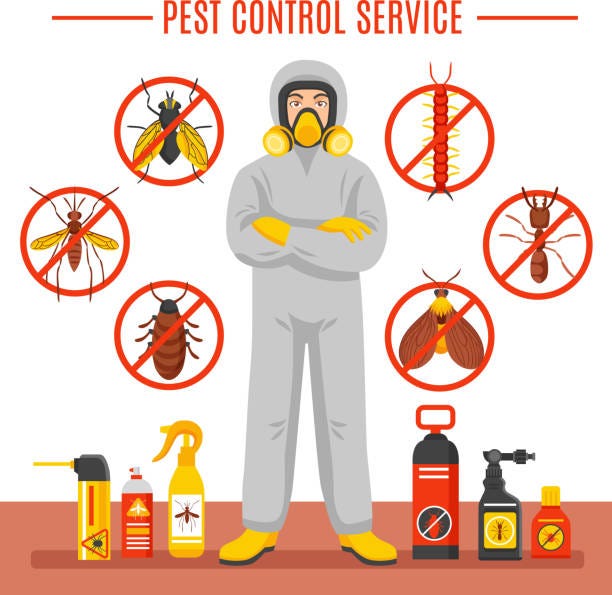Bed Bug Therapy Malfunction: Comparing Chemical Vs. Non-Chemical Solutions
In the world of pest control, especially when managing the persistent issue of bed insects, the selection between chemical and non-chemical treatment services can be a pivotal one. Both approaches use distinctive benefits and downsides, affecting factors such as effectiveness, safety factors to consider, and overall price. By taking a look at the nuanced details of each technique, a clearer understanding of which course to seek in resolving a bed insect infestation can be attained.
Efficiency of Chemical Therapies
Chemical therapies for bed bug infestations have been commonly acknowledged for their quick and potent efficiency in removing these parasites. When thinking about the performance of chemical treatments, it is crucial to understand that they can give a detailed and fast option to a bed bug problem. Expert pest control operators typically rely upon insecticides to target bed insects at numerous stages of their life cycle, including adults, eggs, and nymphs. These chemicals commonly function by disrupting the bed pests' nerve system, bring about paralysis and eventual death.
Furthermore, chemical therapies have the advantage of supplying residual results, indicating that they can proceed to eliminate bed pests also after the first application. This recurring action is specifically helpful in combating any kind of potential re-infestations. In addition, the rapid action of chemical therapies can bring relief to individuals dealing with extreme bed bug problems, permitting them to gain back control of their living areas rapidly.
Safety Worry About Chemical Solutions
When using chemical remedies for bed pest therapy is ensuring the safety of occupants and the setting,One vital facet that needs careful consideration. While chemical treatments can be reliable in eradicating bed pests, they may posture threats otherwise managed properly. One of the key safety and security worries with chemical options is the possible harm they can trigger to human wellness. Direct exposure to specific chemicals used in bed insect therapies can cause respiratory concerns, skin irritation, or other adverse reactions, specifically in people with pre-existing conditions or level of sensitivities. Additionally, inappropriate application or dose of chemical pesticides can lead to toxic deposits sticking around in the treated area, presenting long-term health threats to occupants.
Moreover, the environmental impact of chemical services is one more significant consideration. Some chemicals utilized in bed insect treatments may be dangerous to valuable insects, wild animals, and environments if they leach into the soil or water supply. It is vital to utilize chemical treatments carefully, adhering to safety and security standards, and thinking about less toxic alternatives to reduce these dangers and make sure the risk-free and efficient monitoring of bed bug infestations.
Advantages of Non-Chemical Methods
Considering the potential security worries and ecological influence associated with chemical options for bed bug therapy, discovering non-chemical techniques presents a promising alternative with numerous unique advantages. Non-chemical treatments are ecologically pleasant, as they do not contribute to air or water pollution, making them a lasting selection for pest control.
Additionally, non-chemical options can be effective in targeting bed bugs, consisting of hard-to-reach locations where chemical therapies may not penetrate - A1 charlotte bed bug exterminator. Techniques such as warm therapy, vacuuming, vapor cleaning, and mattress encasements provide detailed obliteration without the usage of hazardous chemicals.
Limitations of Non-Chemical Treatments

Additionally, non-chemical therapies usually need multiple applications to accomplish effective obliteration. This can be lengthy and might not constantly guarantee total removal of all bed bugs and their eggs, especially in hard-to-reach or covert locations.
Furthermore, the success of non-chemical treatments greatly counts on proper application and thoroughness, which can be challenging for people without specialist competence. Poor application of non-chemical methods may lead to incomplete eradication, leading to relentless problems and the need for additional therapies.
As a result, while non-chemical treatments have their advantages, it is vital to acknowledge these restrictions and consider them when figuring out the most reliable technique for managing bed pest invasions.
Price Comparison: Chemical Vs. Non-Chemical Options
Offered visit site the constraints linked with non-chemical therapies, an important element to review in the context of bed bug administration is the expense contrast between chemical and non-chemical options. Chemical treatments commonly include the application of pesticides by experts, which can range from $250 to $900 per area, depending on the severity of the invasion and the size of the location to be dealt with. In contrast, non-chemical therapies like warm therapy or vapor can be a lot more costly, with prices ranging from $1,000 to $6,000 for a whole home. While the first price of chemical therapies might appear lower, several treatments may be called for to totally eradicate the invasion, possibly enhancing the total price. On the other hand, non-chemical options might supply a more eco-friendly and sustainable solution, although they can be cost-prohibitive for some individuals. Eventually, when considering the price of bed bug treatment choices, it is essential to consider the upfront costs versus the effectiveness and long-lasting sustainability of the chosen approach.
Final Thought

Considering the potential security problems and environmental impact connected with chemical remedies for bed bug treatment, checking out non-chemical approaches provides an appealing alternative with several unique benefits.Provided the restrictions connected with non-chemical therapies, an important facet to evaluate in the context of bed pest administration is the cost comparison between chemical and non-chemical options. In comparison, non-chemical therapies like heat treatment or steam can be much more costly, with prices ranging from $1,000 to $6,000 for an entire home. her explanation While the initial price of chemical therapies might appear reduced, several treatments might be called for to completely get rid of the problem, possibly enhancing the overall cost.In conclusion, when comparing chemical and non-chemical bed bug treatment alternatives, it is vital to think advice about efficiency, security, advantages, limitations, and price.